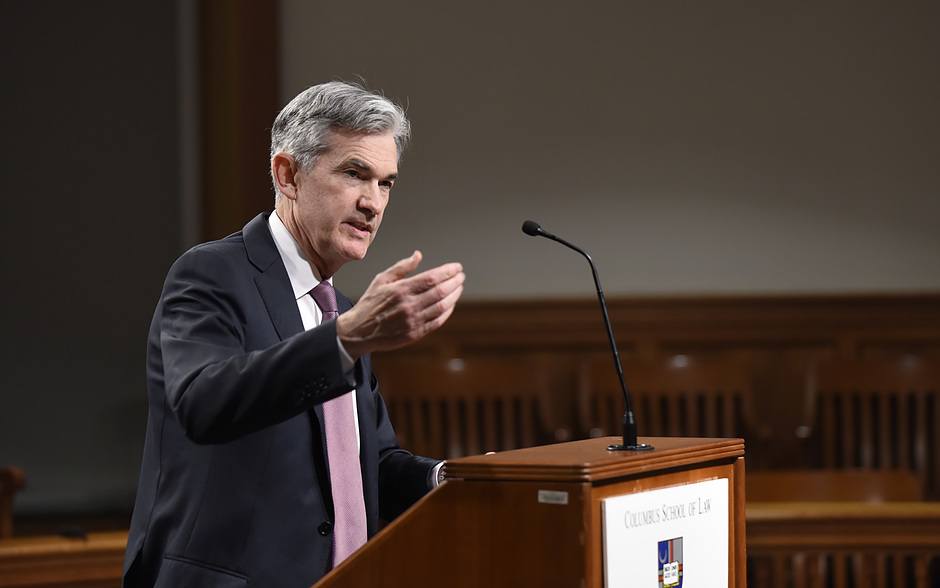Powell speech: Producer Price Index reading was quite mixed

Federal Reserve Chairman Jerome Powell speaks at a moderated discussion with De Nederlandsche Bank (DNB) President Klaas Knot at the Foreign Bankers' Association's Annual General Meeting in Amsterdam.
Key takeaways
"US economy has been performing very well."
"US economy has a very strong labor market."
"Households are in good shape financially."
"Consumer spending, business investment remain strong."
"Still there are labor shortages in many industries."
"Overall, it's a good picture looking at the US economic data so far."
"Labor market is coming back into better balance."
"Labor market is now about as tight as it was before the pandemic."
"Signs of gradual cooling in the labor market with supply and demand getting into better balance."
"Inflation in Q1 was notable for the lack of further progress."
"We did not expect a smooth road on inflation, we have to be patient and let policy do its work."
"We expect continued GDP growth of 2% or better."
"We expect the labor market to continue to rebalance but remain strong."
"We expect inflation to move down back to levels more like last year."
"Confidence in inflation moving back down is lower than it was. My confidence on that is not as high as it was before."
"Producer Price Index reading was quite mixed."
"Firms are still report labor shortages."
"Restrictive policy may take longer than expected to bring inflation down but we will get inflation back to 2%."
"It's a question of keeping policy at the current rate for longer."
"Don't think it's likely that the next move would be a rate hike, more likely that we would hold policy rate where it is."
"Housing inflation has been a bit of a puzzle."
"Current rent increases have been low for some time, not showing up in rollover leases."
"Lags between decline in market rates and it showing up are longer than we thought."
Market reaction
The US Dollar stays under modest bearish pressure following these comments. At the time of press, the US Dollar Index was down 0.2% on the day at 105.00.
Fed FAQs
Monetary policy in the US is shaped by the Federal Reserve (Fed). The Fed has two mandates: to achieve price stability and foster full employment. Its primary tool to achieve these goals is by adjusting interest rates. When prices are rising too quickly and inflation is above the Fed’s 2% target, it raises interest rates, increasing borrowing costs throughout the economy. This results in a stronger US Dollar (USD) as it makes the US a more attractive place for international investors to park their money. When inflation falls below 2% or the Unemployment Rate is too high, the Fed may lower interest rates to encourage borrowing, which weighs on the Greenback.
The Federal Reserve (Fed) holds eight policy meetings a year, where the Federal Open Market Committee (FOMC) assesses economic conditions and makes monetary policy decisions. The FOMC is attended by twelve Fed officials – the seven members of the Board of Governors, the president of the Federal Reserve Bank of New York, and four of the remaining eleven regional Reserve Bank presidents, who serve one-year terms on a rotating basis.
In extreme situations, the Federal Reserve may resort to a policy named Quantitative Easing (QE). QE is the process by which the Fed substantially increases the flow of credit in a stuck financial system. It is a non-standard policy measure used during crises or when inflation is extremely low. It was the Fed’s weapon of choice during the Great Financial Crisis in 2008. It involves the Fed printing more Dollars and using them to buy high grade bonds from financial institutions. QE usually weakens the US Dollar.
Quantitative tightening (QT) is the reverse process of QE, whereby the Federal Reserve stops buying bonds from financial institutions and does not reinvest the principal from the bonds it holds maturing, to purchase new bonds. It is usually positive for the value of the US Dollar.
Author

Eren Sengezer
FXStreet
As an economist at heart, Eren Sengezer specializes in the assessment of the short-term and long-term impacts of macroeconomic data, central bank policies and political developments on financial assets.

















